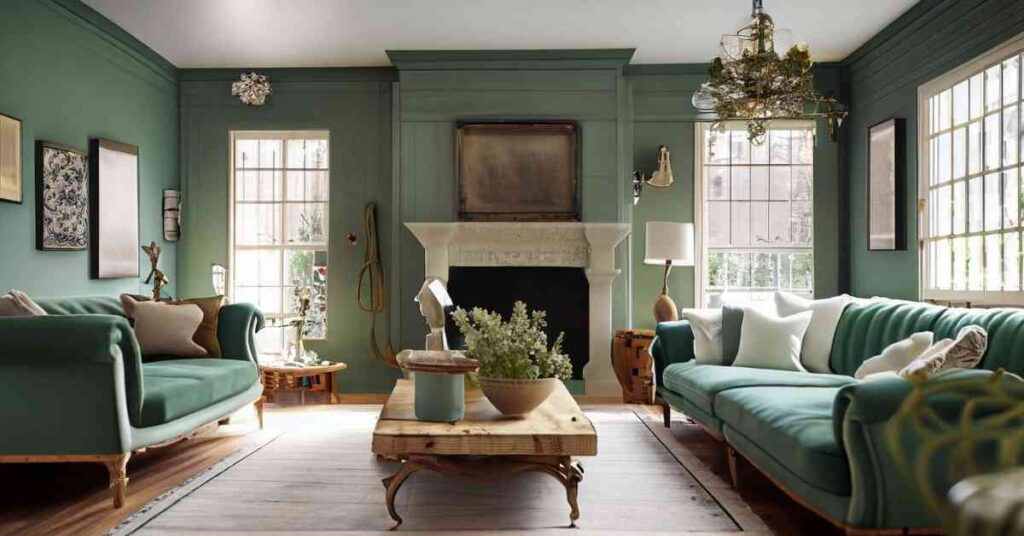
Sage Green is a soothing and versatile color that has gained popularity in interior design, fashion, and various other fields. This comprehensive guide explores the origins, meanings, uses, and cultural significance of sage green, offering insights into its aesthetic appeal and practical applications.
1. Origins and Definition of Sage Green
Sage green derives its name from the herb sage (Salvia officinalis), known for its grayish-green foliage. The color is characterized by its soft, muted tones that evoke a sense of tranquility and natural beauty. It sits on the spectrum between green and gray, often described as a dusty or muted green hue.
2. Psychological and Emotional Associations
Psychologically, sage green is associated with calmness, balance, and harmony. It is believed to have a grounding effect, making it a popular choice in spaces where relaxation and concentration are desired, such as bedrooms, offices, and meditation rooms. The subtle warmth of sage green can create a comforting atmosphere, promoting a sense of well-being and peace.
3. Cultural and Symbolic Meaning
In various cultures, green symbolizes growth, renewal, and prosperity. Sage green, with its connection to the herb sage, also carries associations with wisdom, longevity, and healing. In interior design, it is often used to evoke a connection to nature and the outdoors, bringing a sense of serenity and freshness into living spaces.
4. Applications in Interior Design
– Sage Green in Paint and Wall Coverings
Sage green paint has become increasingly popular for its ability to transform a space without overwhelming it. It works well as both a primary color and an accent, complementing a wide range of interior styles from modern minimalist to rustic farmhouse. In wall coverings, sage green wallpapers and textured finishes add depth and character to walls, creating a serene backdrop for furniture and decor.
– Furniture and Upholstery
Furniture pieces in sage green upholstery or finishes add a touch of sophistication and elegance to any room. From sofas and armchairs to dining chairs and ottomans, sage green furniture blends seamlessly with neutral palettes and natural materials, enhancing the overall aesthetic appeal of the space.
– Decor and Accessories
Accessories such as throw pillows, curtains, rugs, and artwork featuring sage green tones can tie together the look of a room, creating visual interest and cohesion. Metallic accents like brass or gold complement sage green beautifully, adding a touch of glamour and warmth to the decor.
5. Fashion and Textiles
In the realm of fashion, sage green has made its mark as a versatile and timeless color choice. It is often used in clothing, accessories, and footwear due to its calming effect and ability to complement a wide range of skin tones. Sage green dresses, blouses, and jackets are popular choices for their understated elegance and versatility in both casual and formal settings.
6. Sage Green in Nature and Photography
Nature photography often captures the essence of sage green in landscapes, foliage, and flora. The color appears in various shades depending on the season and environmental factors, reflecting its organic origins and connection to natural beauty. Photographers and artists use sage green as a motif to convey tranquility, serenity, and the timeless beauty of the natural world.
7. Sustainability and Green Design Trends
As sustainability becomes increasingly important in design and architecture, sage green aligns with green building practices and eco-friendly materials. It symbolizes a commitment to environmental responsibility and mindful living, influencing choices in home decor, furniture design, and urban planning.
8. Popular Combinations and Color Schemes
Sage green pairs harmoniously with a variety of colors, creating balanced and visually appealing color schemes. Some popular combinations include:
- Sage Green and Neutrals: Combining sage green with shades of white, beige, or taupe creates a serene and timeless look.
- Sage Green and Earth Tones: Mixing sage green with browns, terracotta, or mustard yellow adds warmth and depth to a space.
- Sage Green and Pastels: Soft pastel hues like blush pink, lavender, or pale blue complement sage green, creating a delicate and calming ambiance.

9. Conclusion
In conclusion, sage green is much more than just a color—it’s a symbol of tranquility, balance, and natural beauty. Whether used in interior design, fashion, or photography, sage green enhances spaces with its calming presence and timeless appeal. Its versatility allows for creative combinations and applications, making it a favorite among designers and homeowners alike.
By understanding the origins, meanings, and applications of sage green, individuals can incorporate this soothing color into their lives to create spaces that are both aesthetically pleasing and emotionally comforting. Whether you’re redecorating a room or updating your wardrobe, sage green offers endless possibilities for creating harmonious and inviting environments.
